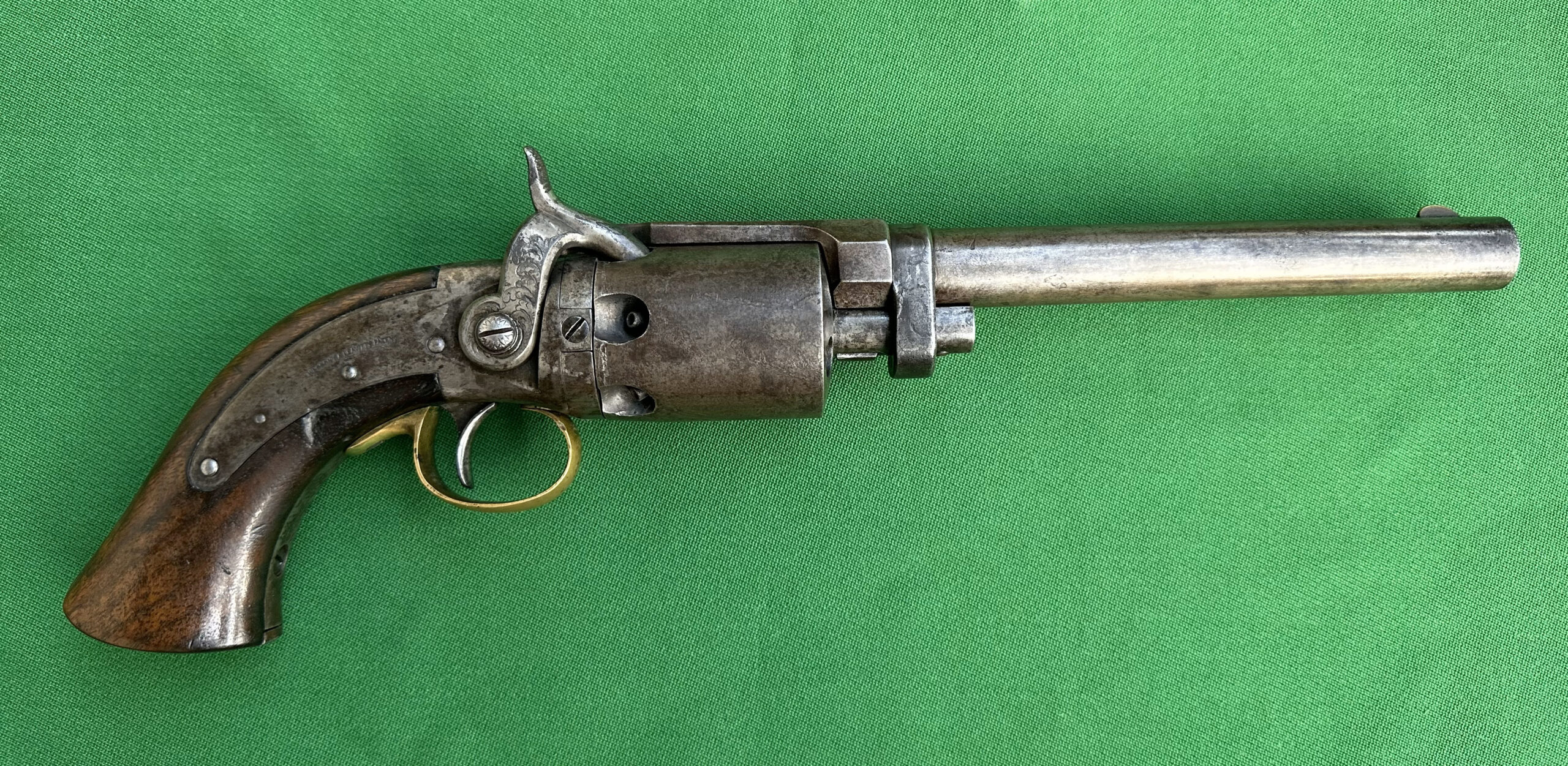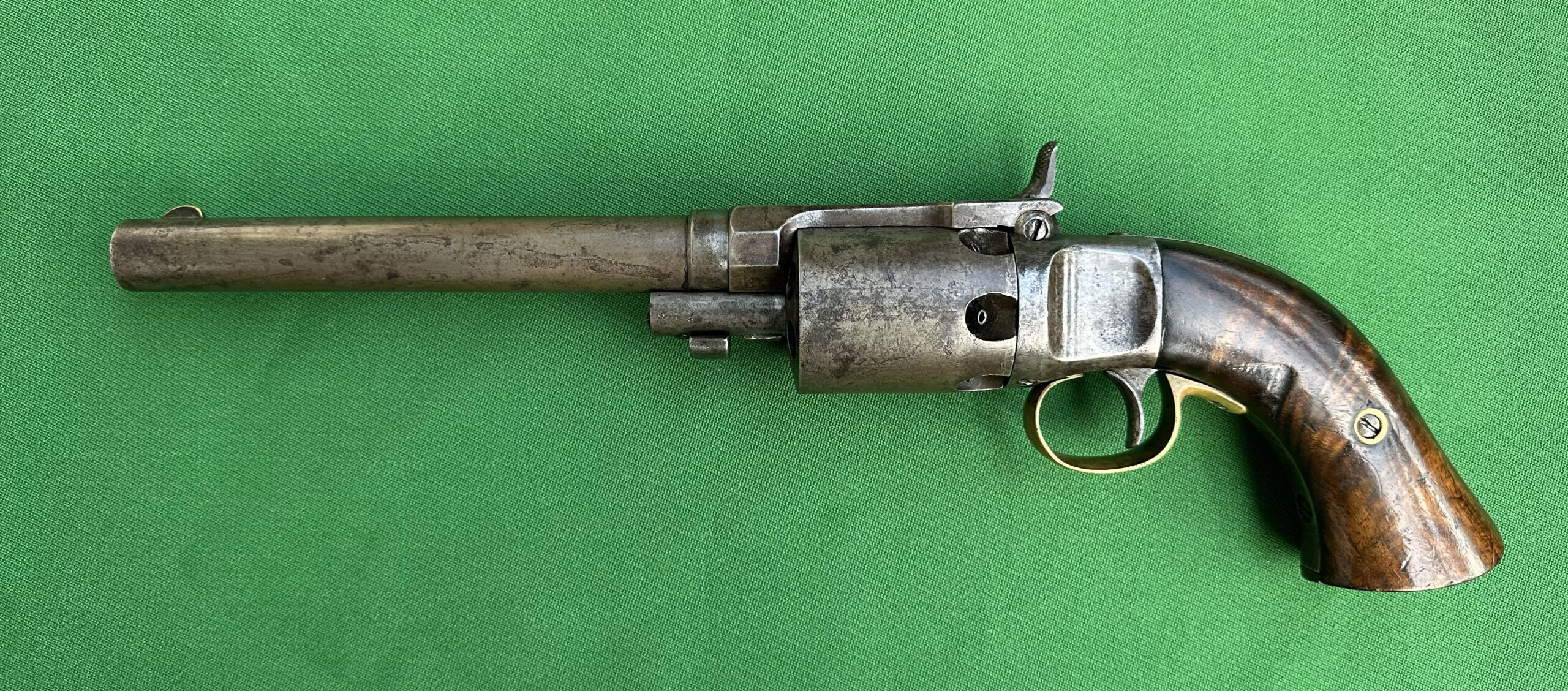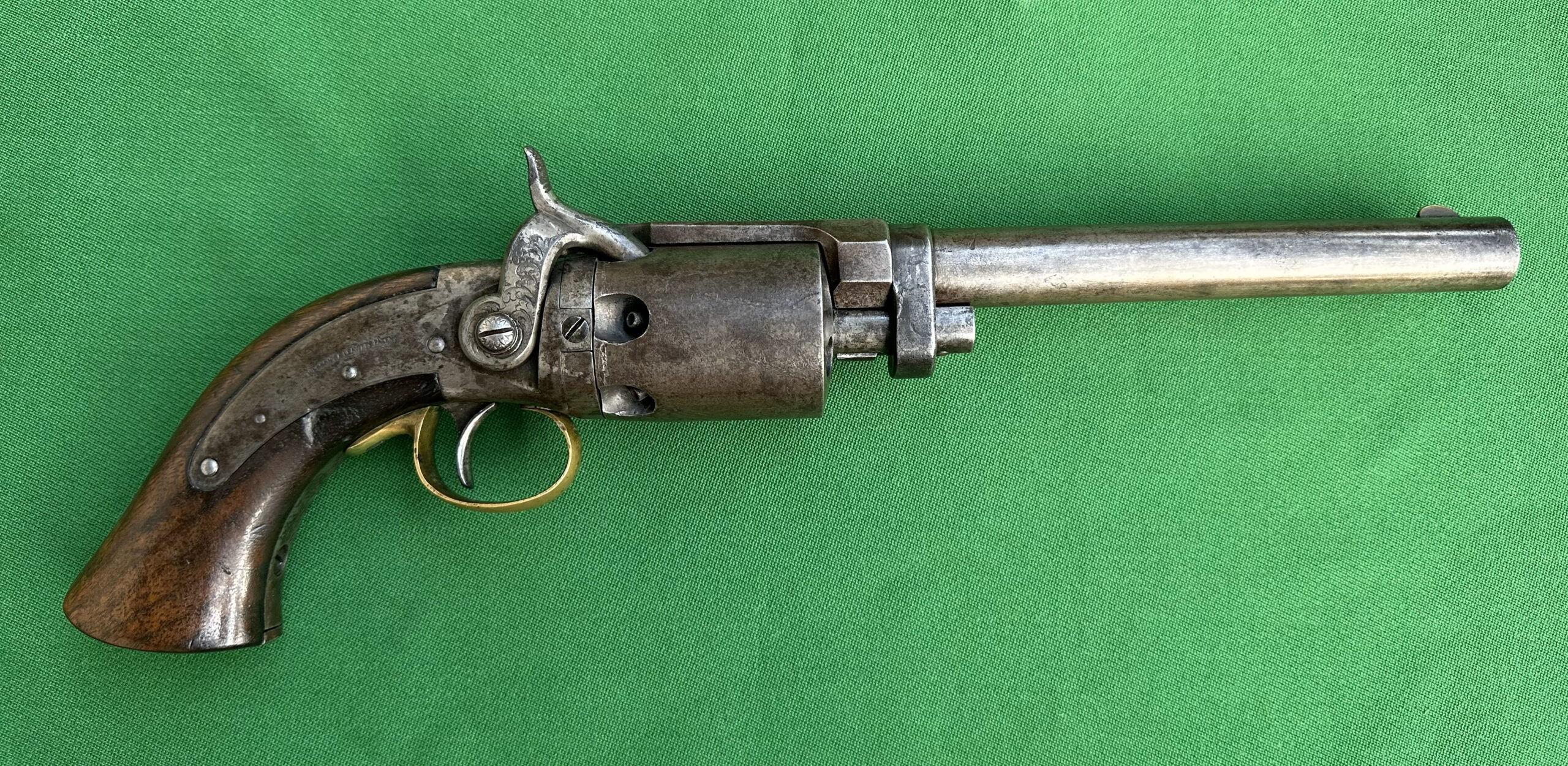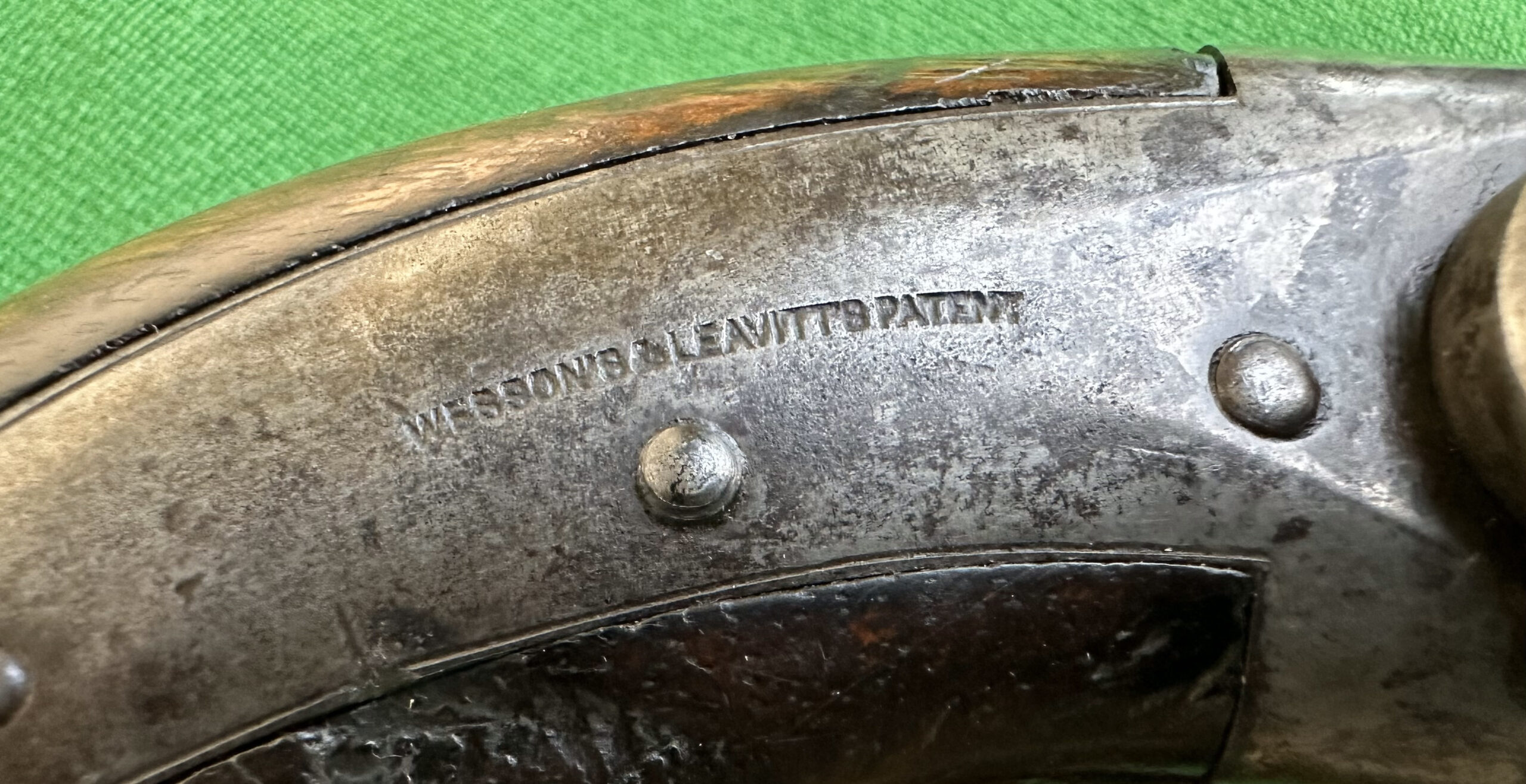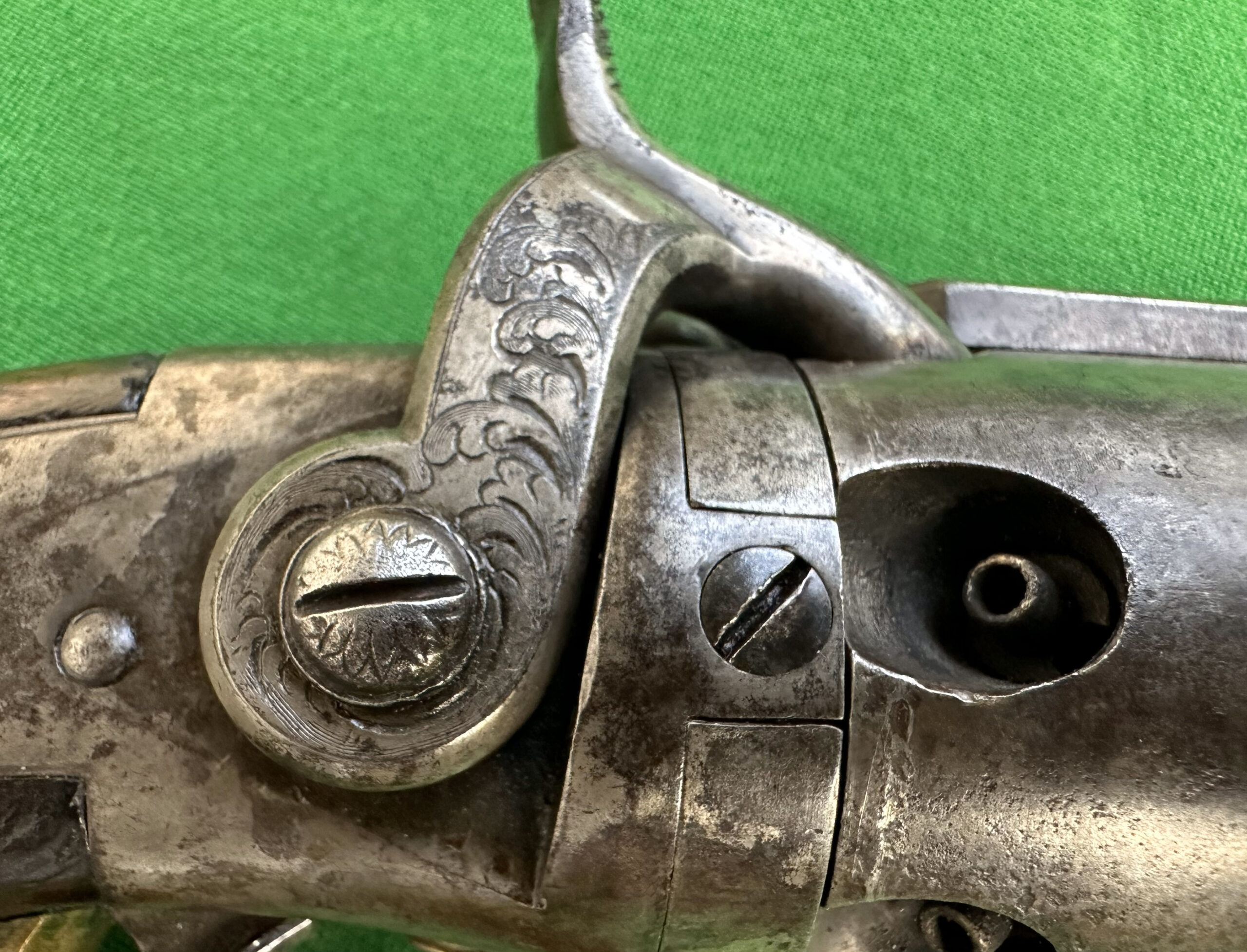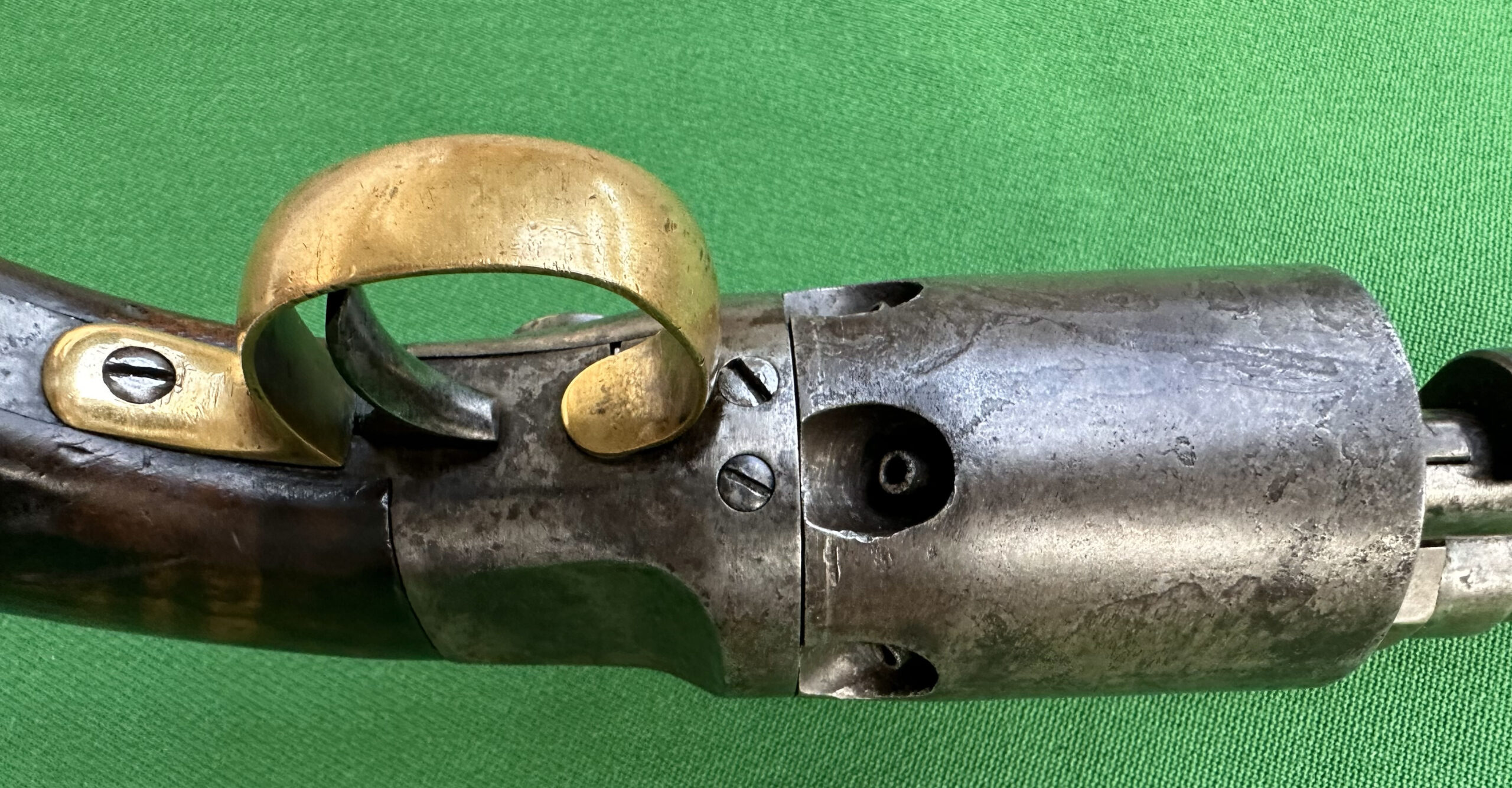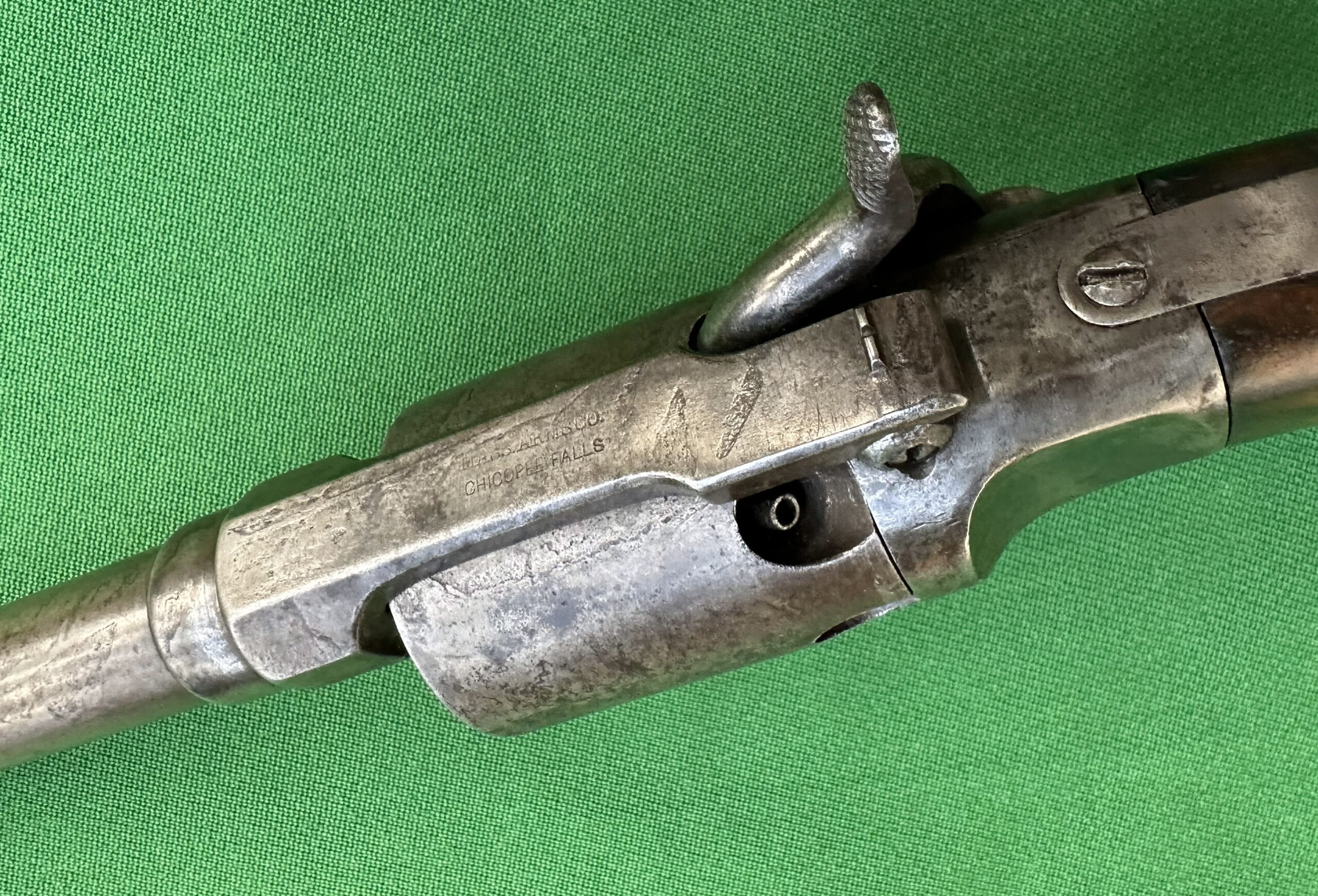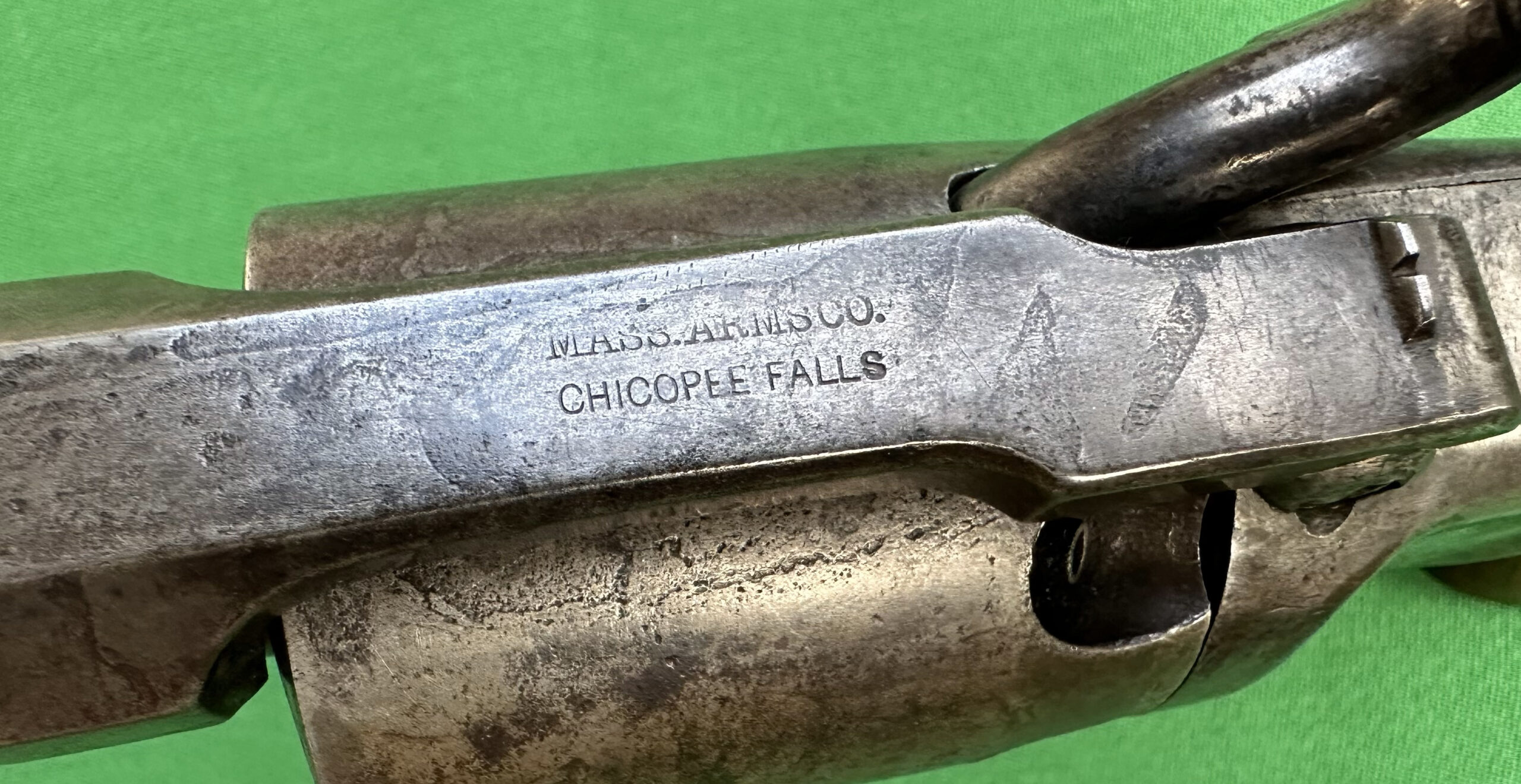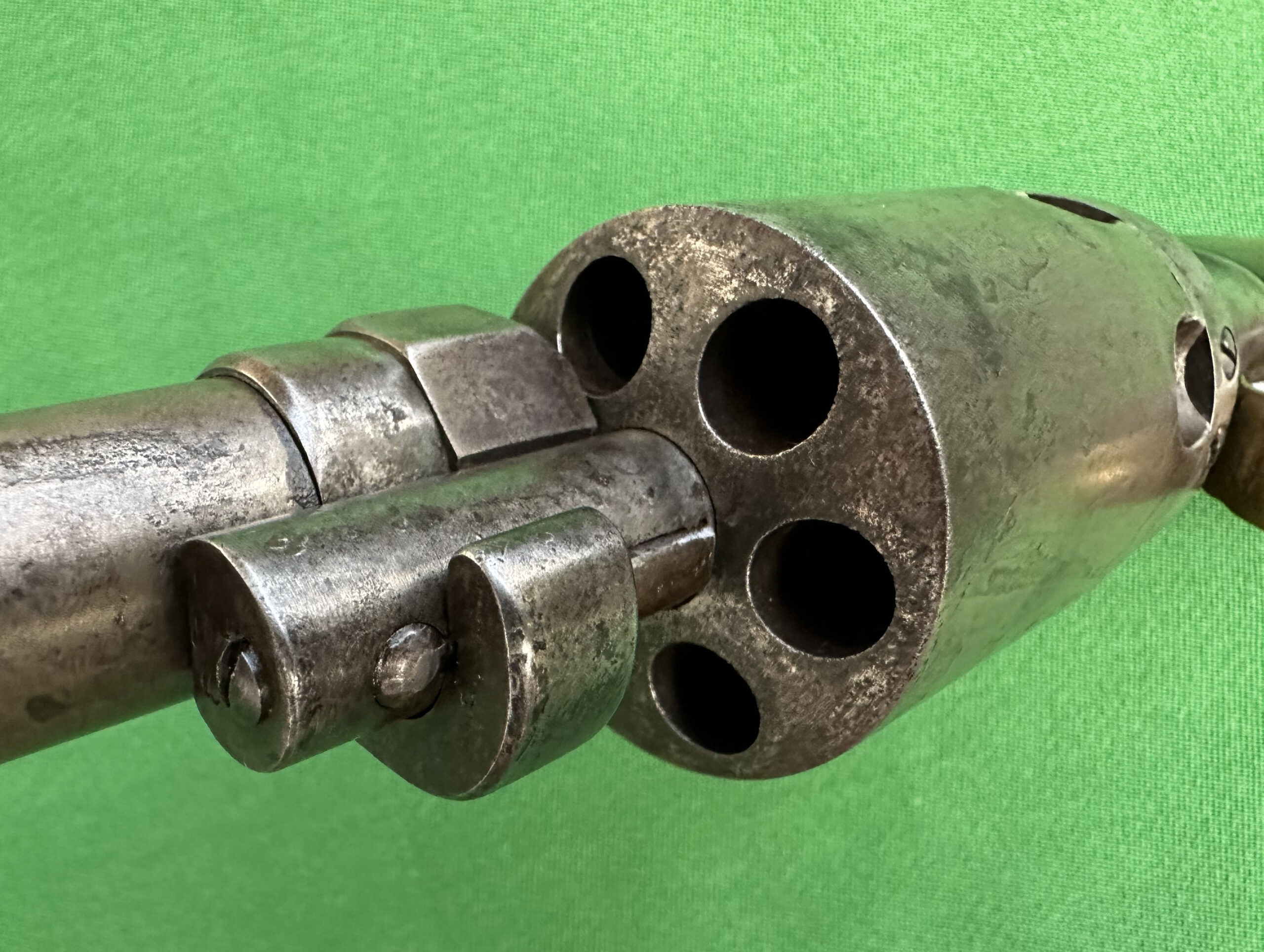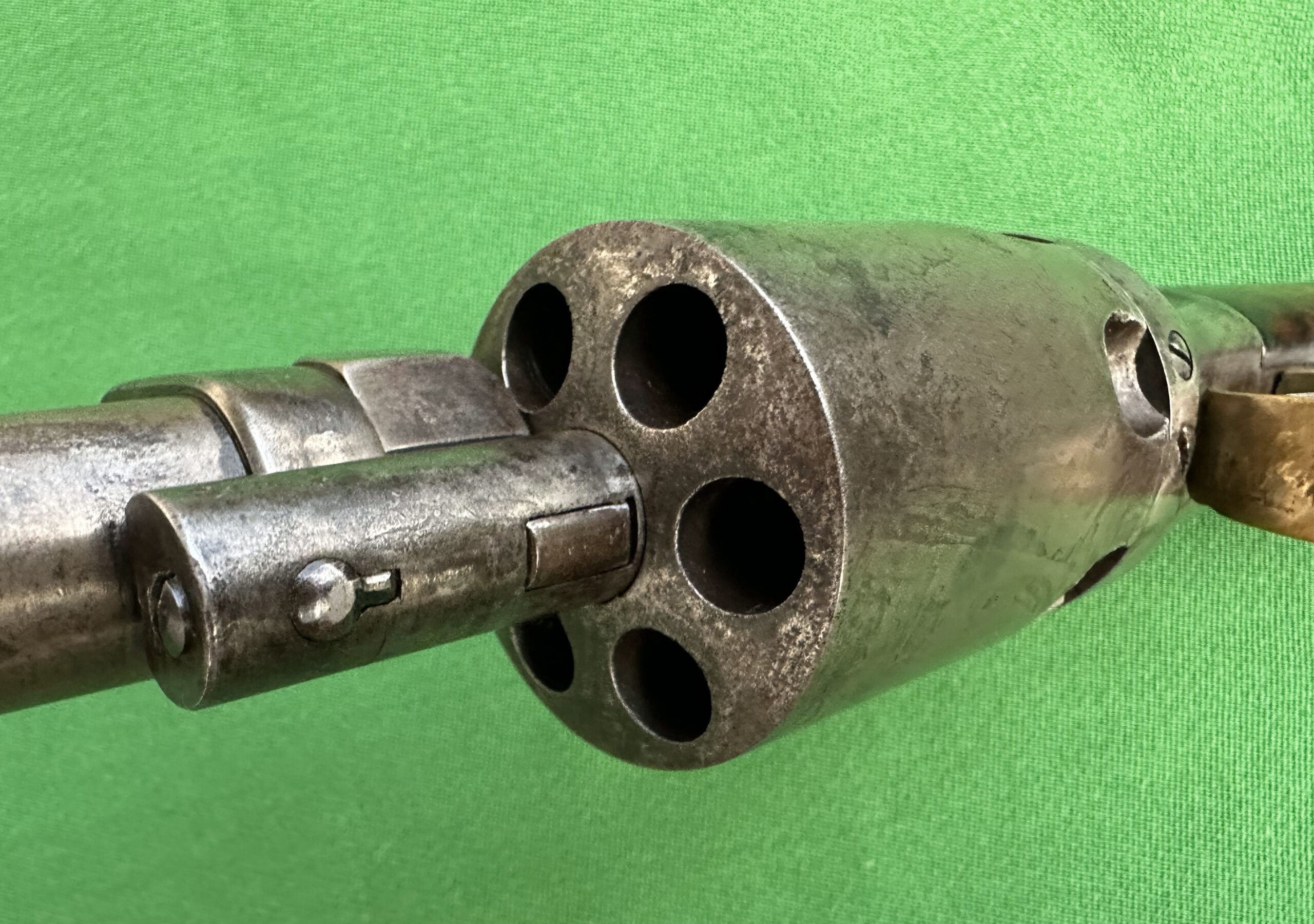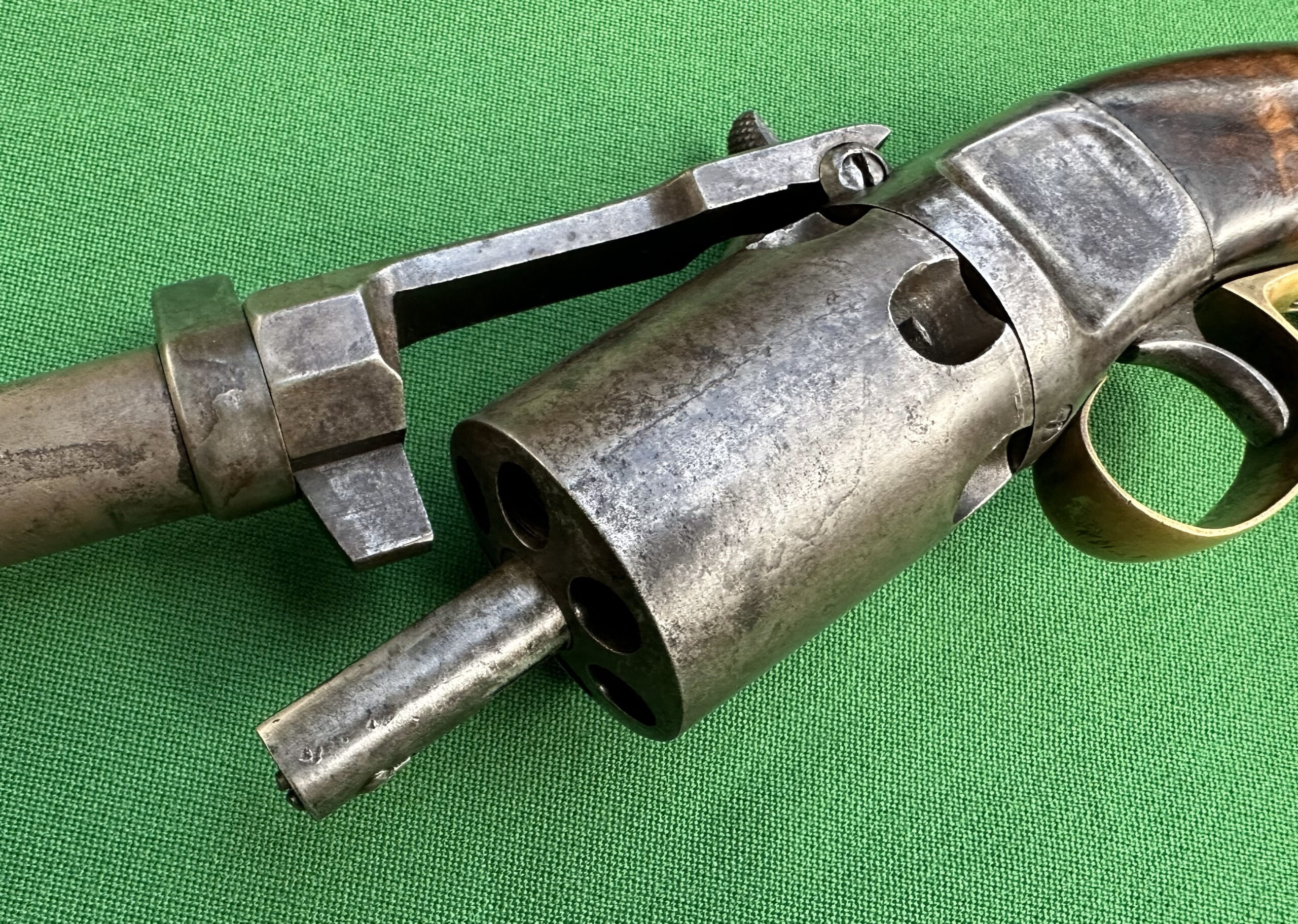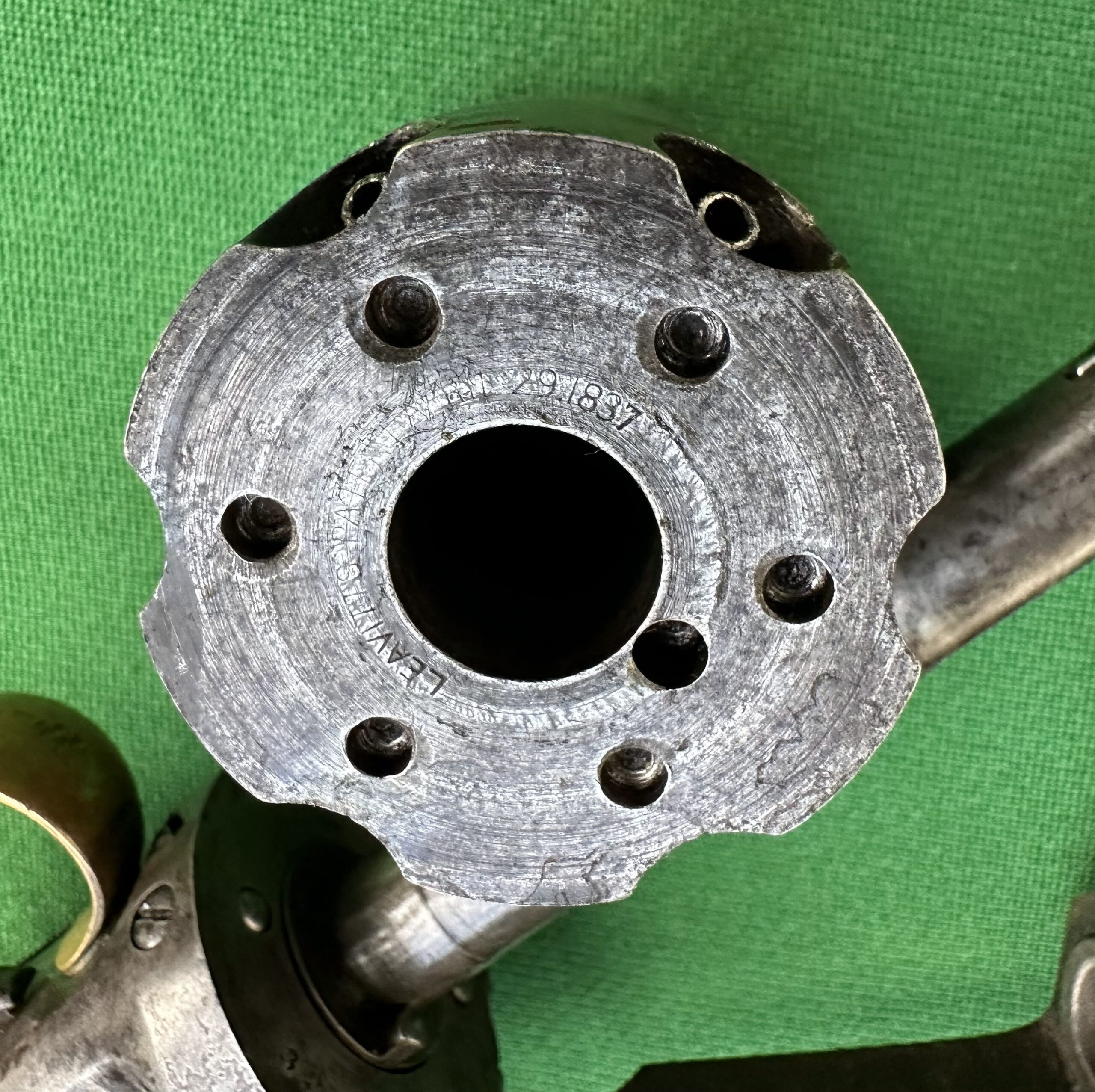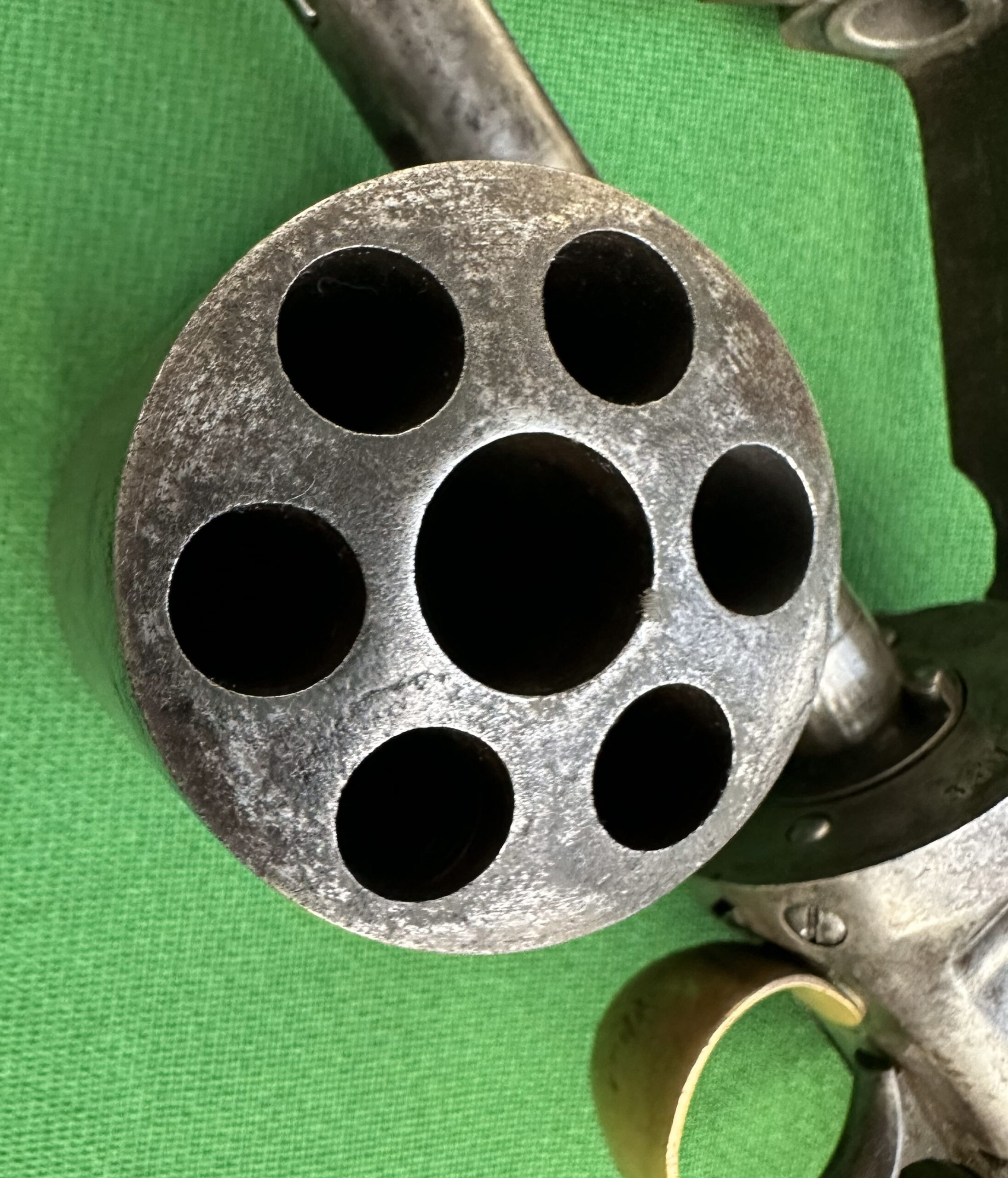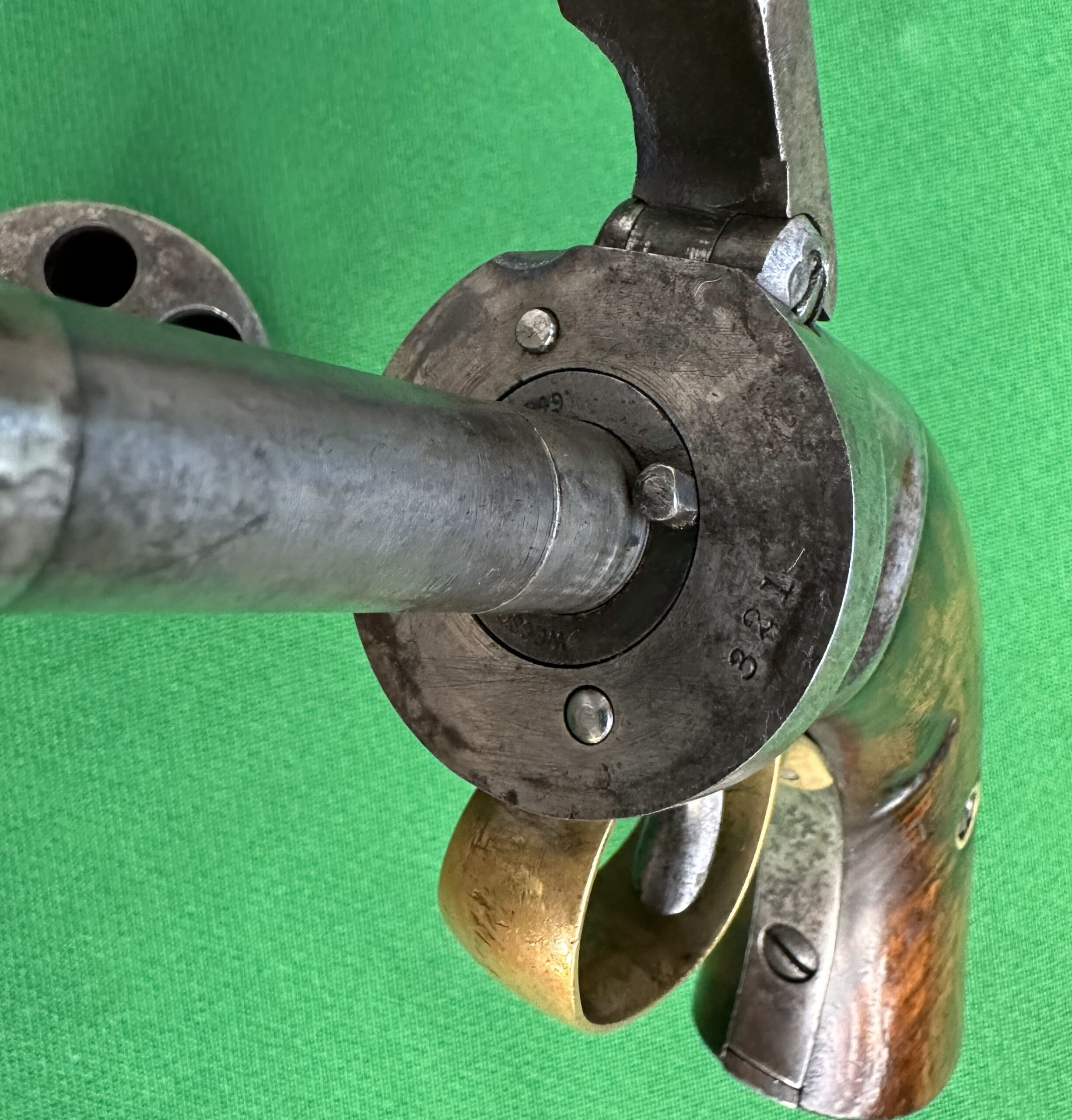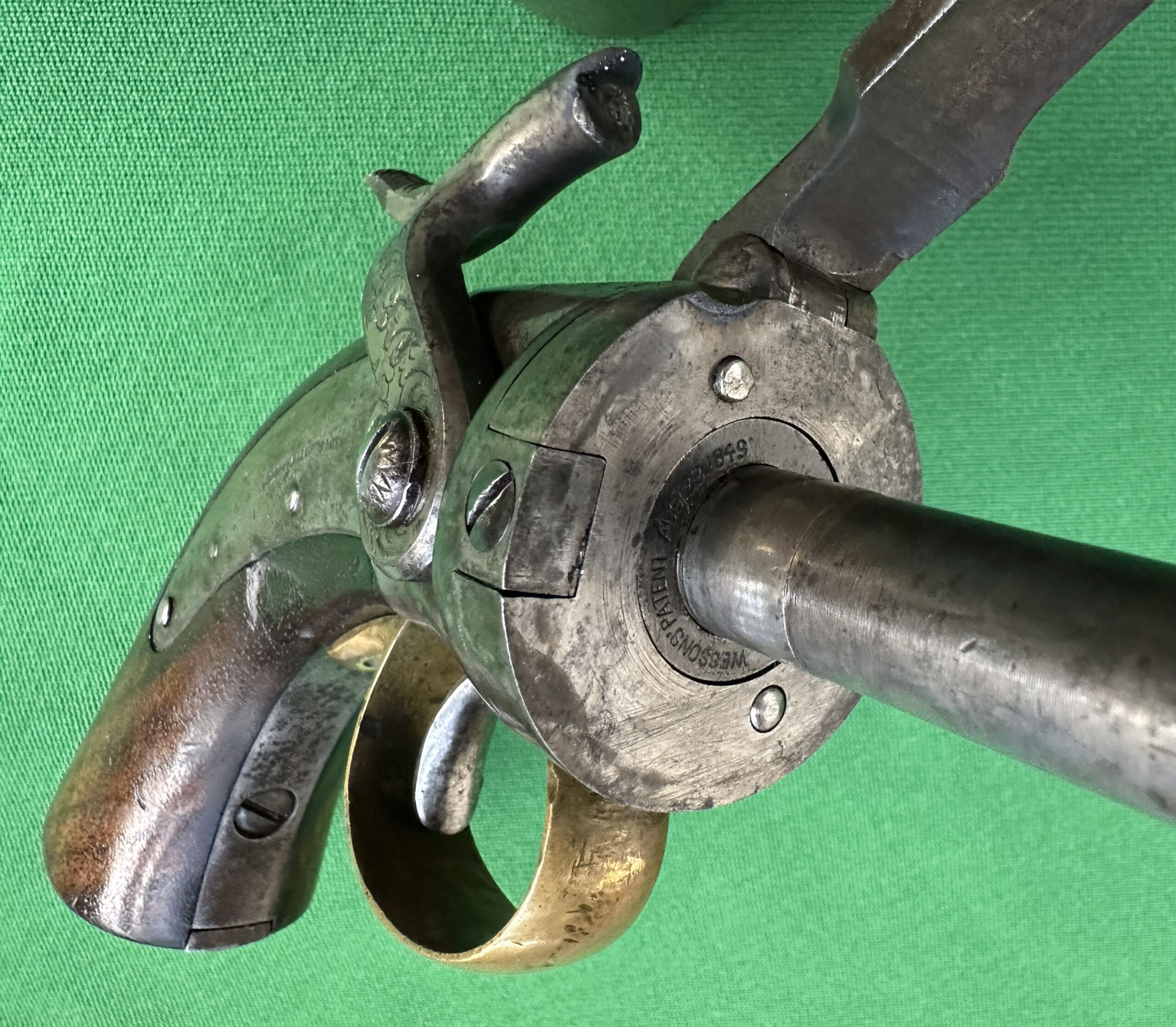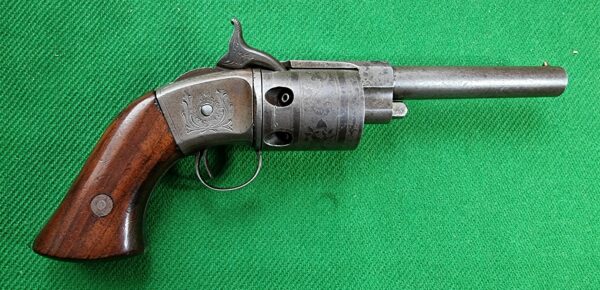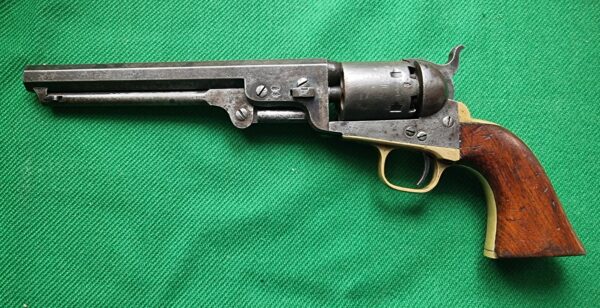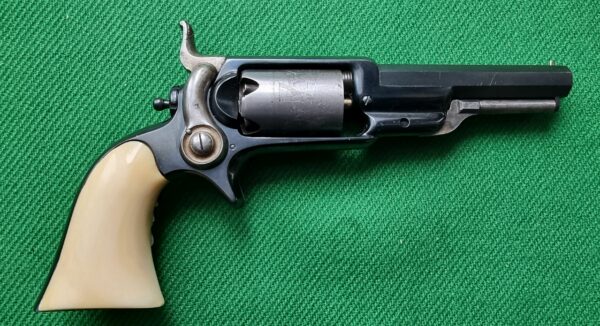Wesson and Leavitt Dragoon .40 revolver
Description
Scarce Wesson and Leavitt Dragoon .40 revolver manufactured by Massachusetts Arms Company in 1850 in quantity of 800. It had a small brother in belt caliber of .31, which was made in 1000 pieces.
Patent for this mechanism belonged to Daniel Leavitt and was issued in 1837. Unique was beveled, oblique front surface of the drum. Probably the idea was to reduce cross fire chance. Another feature is up-swinging barrel. The drum had to be removed to be loaded. The revolver works in single action mode.
It is great haevy gun, that can be used as a hammer when all chambers are empty.
This is a wonderful example of an early Massachusetts Arms Company Wesson & Leavitt Dragoon Revolver. Although much better known for their later production Adams Patent revolvers and various military carbines like the Greene, Maynard, Smith and Warner, their early production pistols are by far some of the most interesting guns that they produced. The Mass Arms Company was formed in Chicopee Falls, MA in 1849 and was incorporated in 1850. It counted among its incorporators such later luminaries in firearms history as Horace Smith and Daniel Wesson (who would later founded Smith & Wesson), Joshua Stevens (later to start the J. Stevens Arms Company), gun designers Edwin Wesson and Benjamin F Warner (of Warner Carbine fame). James T. Ames of the famous Ames Manufacturing Company was also one of the original incorporators and served as the Chairman of the Massachusetts Arms Company board of directors, as well as providing factory space at Ames for the initial production of Massachusetts Arms firearms.
The first arms produced by Mass Arms were percussion revolvers designed by Edwin Wesson, brother of Daniel Wesson, and Thomas Warner, who was the factory superintendent. The revolvers were produced under patents held by Edwin Wesson and Daniel Leavitt. On April 29, 1837, Leavitt had received US Patent #182 for a revolving pistol design. It is worth noting that this was the second revolving handgun design to receive a US patent, the first being Samuel Colt’s 1836 patent for what would become the Paterson revolver.
The first guns produced in 1850 were the larger “Dragoon” sized revolvers in .40 caliber. Later in 1850, the firm introduced a “Belt” size revolver in .31 caliber. Both revolvers utilized side-mounted, back action locks that operated in a “single action” fashion. They had a hinged top strap that connected the barrel to the rear portion of the frame, which contained the lockwork. The barrel was held in a stationary and locked position by a swinging latch that secured the topstrap to the forward portion of the cylinder arbor pin. The guns had six-shot cylinders with convex beveled fronts. This beveled cylinder face was one of the key features in Leavitt’s patent application, as he claimed the design would reduce the potential for the “chain fire” of adjacent cylinder chambers when the gun was fired. The cylinders also had oval recesses for the percussion cones, which entered the chambers at about a 30-degree angle. The cocking action of the hammer rotated a back plate in the frame of the revolver. This back plate rotated the cylinder by way of a pin, which extended from the plate and engaged an index hole on the rear face of the cylinder. A second, smaller pin would move in and out of the frame, engaging smaller holes on the rear of the cylinder that corresponded to each chamber, allowing for accurate indexing and lock up of the cylinder. The guns were manufactured with round blued barrels, case hardened frames and brass back straps and trigger guards, which were silver-plated. During the brief production run (1850-1851) of Wesson & Leavitt revolvers, Mass Arms produced about 800 of the larger Dragoon revolvers and approximately 1,000 of the Belt revolvers. Production was ended during 1851 due to a successful patent infringement lawsuit that was filed by Samuel Colt. Colt’s suit noted that the Mass Arms revolver violated his patent on a mechanism that revolved the cylinder when the hammer was cocked. In order to stay in business, Mass Arms redesigned their revolvers to use a manually revolved cylinder and Dr. Edwin Maynard’s automatic tape priming system. The new guns did not sell well, and Massachusetts Arms teetered on the brink of disaster until the expiration of the Colt patent in 1857. It was at that time that Massachusetts Arms introduced their licensed version of the Adams patent revolver. This was quickly followed up by the introduction of Dr. Maynard’s “1stModel” carbine, which was a successful product as well. Despite a fire that temporarily closed the company in January of 1861, by 1863 a reorganized version of the Massachusetts Arms Company was back in business, under the direction by Dr. Maynard. This company would remain in the firearms business through the end of the American Civil War and going out of business in 1866.
The Massachusetts Arms Company Wesson & Leavitt Dragoon Revolver offered here is in about FINE overall condition. This scarce “Dragoon” sized revolver is a 6-shot, .40 caliber pistol with a 7 1/8” long round barrel and an overall length of about 15 ¼”. The handful of a handgun tips the scales at a little less than pounds, weighing in at 3lbs 14oz according to my fish scale. The revolver is clearly marked in one line on the rear of the back action lock: WESSON & LEAVITT’S PATENT and on the top strap in two lines: MASS ARMS CO / CHICOPEE FALLS. The cylinder rotating plate in the frame is marked WESSON’S PATENT AUG 28, 1849. The rear face of the cylinder is marked LEAVITT’S PATENT APRIL 29, 1837. The face of the back catch is marked PATENT vertically and NOV. 26, 1850 horizontally. The face of the recoil shield is also marked with the serial number 315. No other external serial numbers are noted, although the rear face of the frame has the matching serial number, which is only visible when the grips are removed. The gun retains about 10%+ of its original blue, primarily in protected areas, at the rear of the frame behind the recoil shield, on the barrel closure catch and on the backstrap. In face, the blue on the backstrap and catch is still quite right. The balance of the metal shows a dull, mottled and lightly oxidized grayish brown patina with some traces of dull, faded blue and some dully mottled hints of casehardened colors on the lock and hammer. The blue of the Massachusetts Arms handguns is a vibrant, heavily blue tinged blue with iridescent greenish tones that is reminiscent of a niter blue finish. This type of blue, while vibrant and very attractive, tends to be extremely fragile and is quite prone to flaking. Most of the finish loss on this gun appears to be the result of flaking. Some dulled blue remains on the rear face of the cylinder as well. The metal is mostly smooth with some flecks of scattered surface oxidation on the barrel, cylinder and lock. All of the markings remain extremely clear and crisp, including the two-line topstrap marking on the topstrap. The bore of revolver is in about FINE condition. It is nearly entirely bright and shows crisp 7-groove rifling along its entire length, with only some lightly scattered oxidation and very lightly scattered minor pitting. The gun is mechanically excellent and functions perfectly. The revolver indexes, times and locks up perfectly. The brass triggerguard has a lovely, uncleaned, rich butterscotch patina that is very attractive. The original sights are both in place. These include the small notched rear sight on the rear of the top strap and the brass blade front sight on the top of the barrel, near the muzzle. The smooth one-piece walnut grip is in about FINE condition and were it not for a small chip out of the leading edge of the right side would rate even better, closer to “excellent”. They retain the majority of their original varnished finish. The grips are solid and complete with no repairs or cracks but do some scattered bumps, dings and mars particularly around the circumference the slightly flared bottom edges, along with the small chip mentioned above.
Overall this is a really attractive example of a relatively scarce pre-Civil War large sized percussion revolver. These guns were produced in limited numbers and were some of the first somewhat successful percussion revolvers sold in the US. The revolvers were a significant enough threat to Samuel Colt that he went after The Massachusetts Arms Company with all the force of law to end their production. This gun is really attractive and displays very well. It retains some nice original finish with an equally attractive patina where the finish has worn, is mechanically excellent with a fine bore, and retains markings that are crisp and clear. For any collector of Civil War era percussion revolvers, this would be a nice addition to their collection, as it is generally considered a secondary martial revolver. The revolver would also be a great addition to a collection of early Smith & Wesson revolvers, as the gun was produced by the founders of Smith & Wesson, prior to the establishment of that firm. These impressively large percussion handguns are rarely found on the market, particularly in such crisp condition, and I am very sure you will be proud to add it to your collection.
